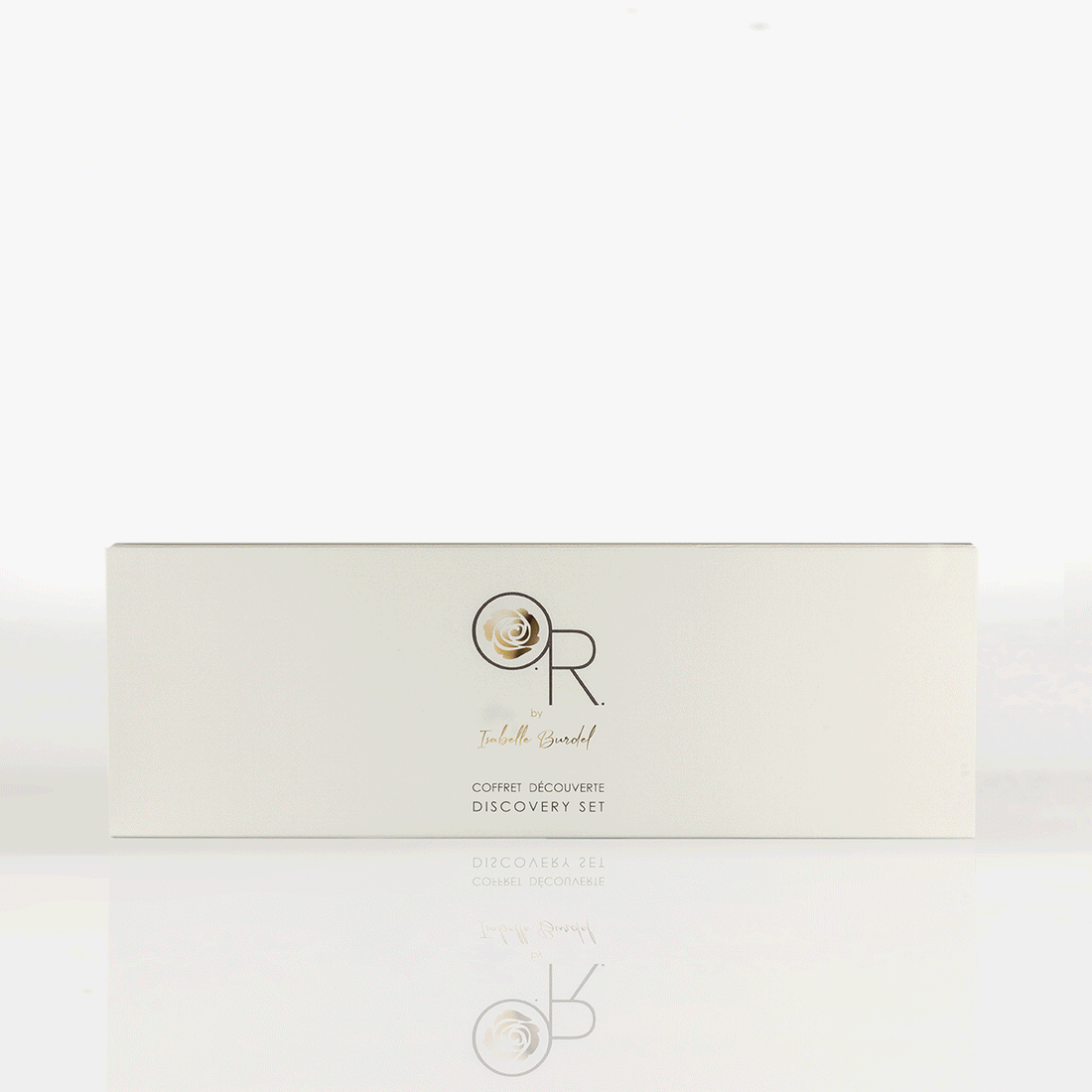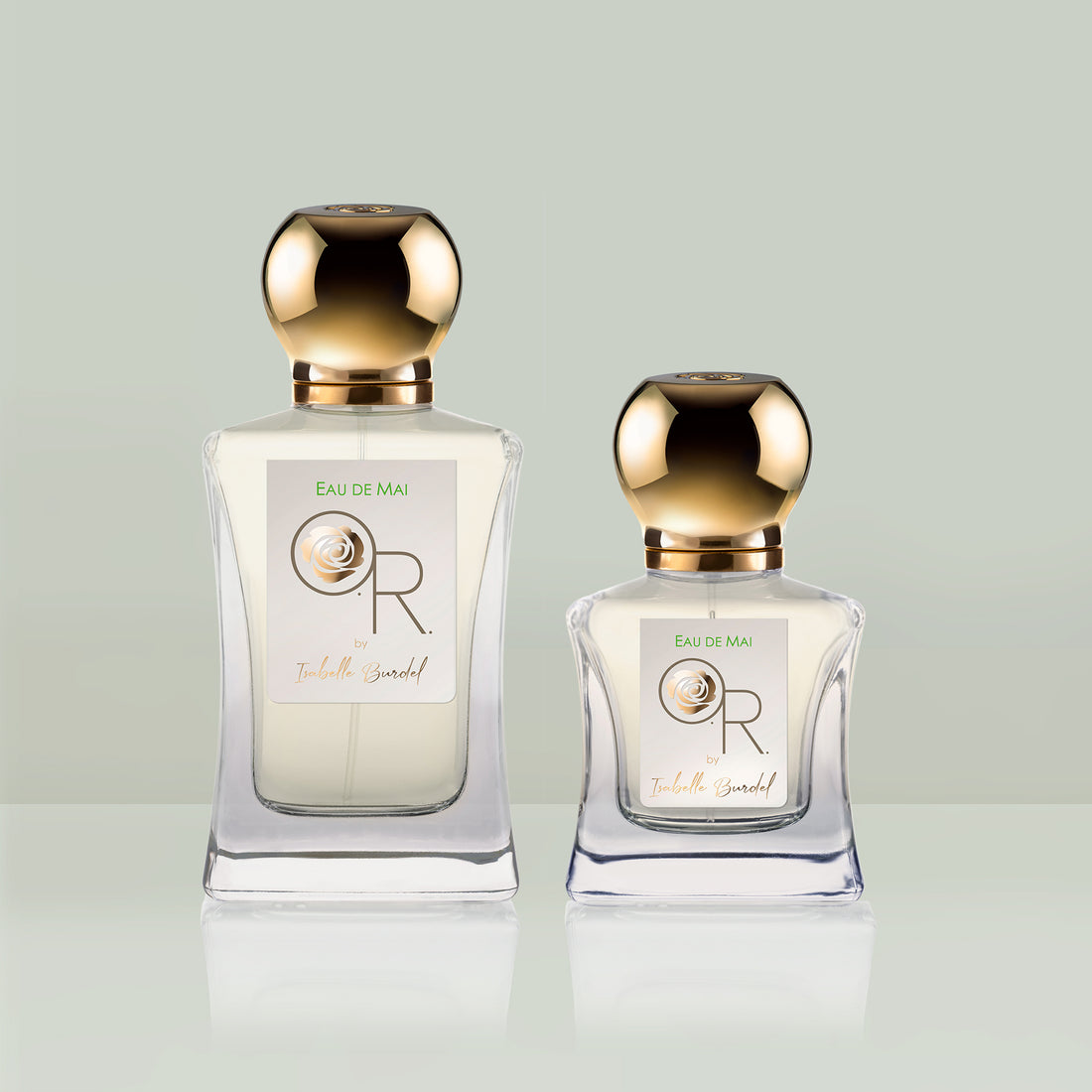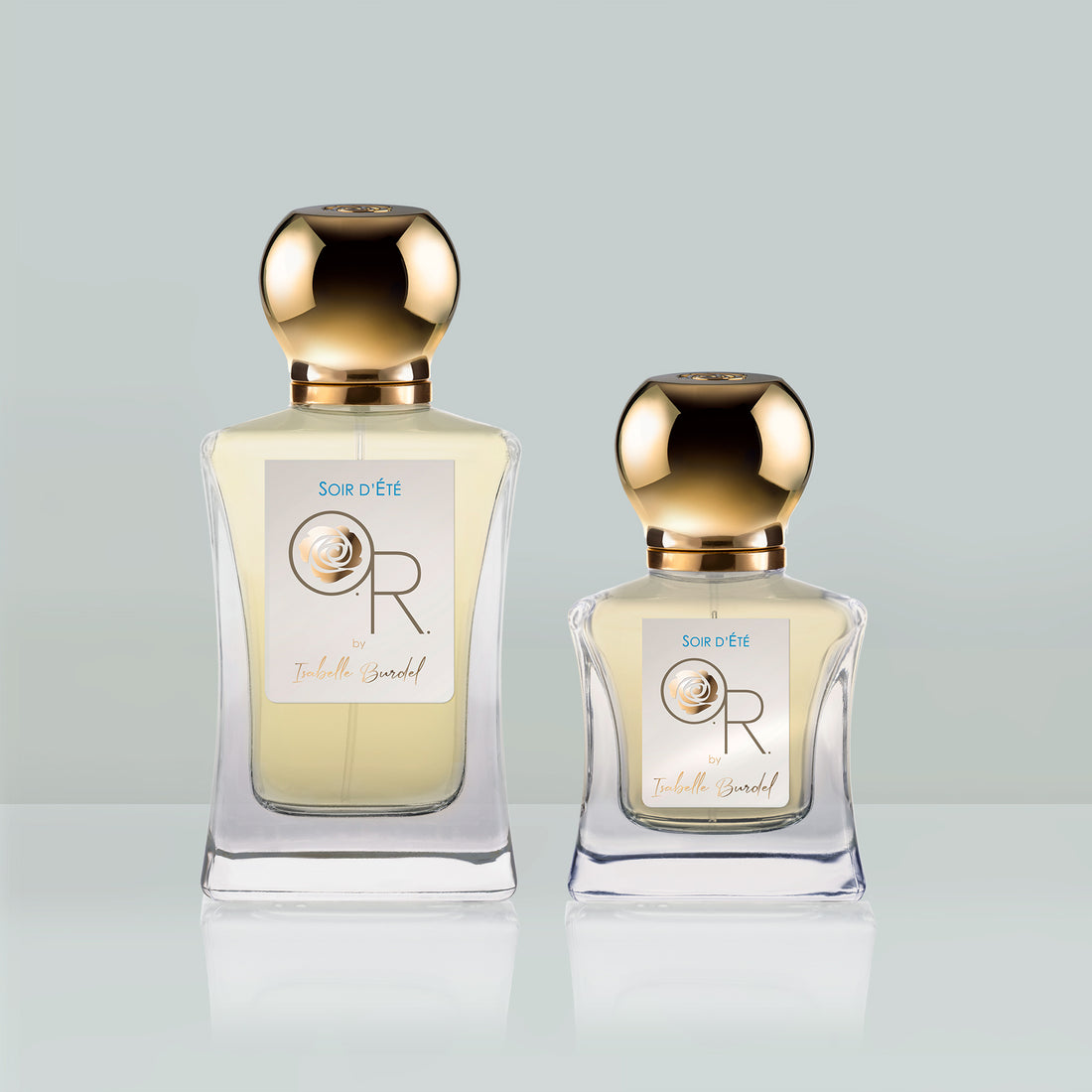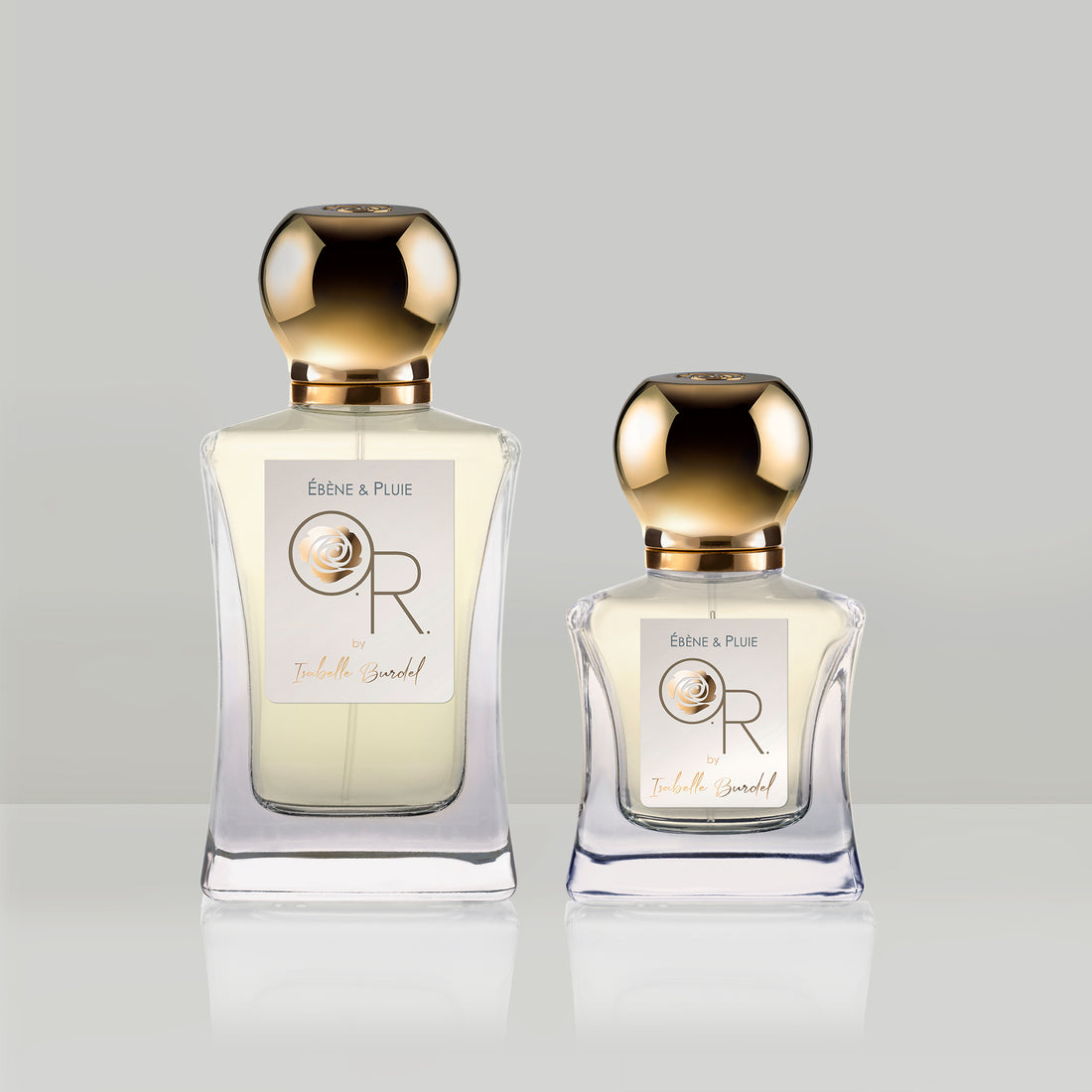What is the difference between eau de toilette and eau de parfum? Which concentration suits you best? Depending on your preferences, the season, or your lifestyle, an eau de toilette or an eau de parfum may be more suitable for your needs. Discover our advice to enhance your fragrance in all circumstances and align it with your mood and personality.
Eau de toilette or eau de parfum: two distinct concentrations
The main difference between an eau de toilette and an eau de parfum lies in their concentration. While there are no strict regulations on the matter, and brands are free to name their products as they wish, the terms "eau de toilette" or "eau de parfum" depend on the concentration of pure fragrance in alcohol.
An eau de toilette typically contains a concentration equal to or less than 12% in alcohol, while an eau de parfum can range from 12% to 20%. This distinction means that an eau de toilette is often more volatile, while an eau de parfum tends to be longer-lasting and more diffusive.
Eau de toilette, eau de parfum, and extract: a brief history of concentrations
Originally, only the extract existed, with the highest concentration (over 25%), embodying the luxury associated with perfume in the early 20th century. The extract is similar to a piece of jewelry or an evening gown, representing the ultimate touch of seduction in a somewhat old-fashioned gesture of applying perfume directly to the skin, imbuing it with sensuality.
Eau de toilette emerged shortly after, lighter and less luxurious, initially intended for toiletry use. These two concentrations coexisted until the late 1970s when eau de parfum was born, primarily created to circumvent a tax regime imposing a 33% VAT on extracts.
Starting in the 1980s, eau de parfum, sometimes referred to as "parfum de toilette" or "esprit de parfum" by brands, gained immense popularity and supplanted extract. More intense than eau de toilette yet less expensive than extract, eau de parfum was also better suited to the era when women were working and wanted to wear fragrance from morning to night.
Today, the tradition of using extract has become rare, except for a few prestigious houses, in favor of eau de parfum.
Eau de toilette or eau de parfum: what are the advantages ?
The evolution of fragrance is often simplified into three stages: top notes, heart notes, and base notes. Top notes last around fifteen minutes on the skin or a test strip since they consist of volatile materials like citrus. Heart notes define the perfume's personality and can last up to 3 hours on the skin or a test strip, often featuring floral, fruity, or spicy notes. Finally, base notes are what remains on the skin by the end of the day and usually consist of resins, woods, or musks.
Unlike an eau de parfum, an eau de toilette is often fresher as it emphasizes top notes. Its diffusion is more immediate and, at times, stronger initially but less long-lasting. It can be applied to clothing or the skin, or even used in combination with an extract to enhance the fragrance trail.
An eau de parfum highlights heart and base notes more prominently. It also provides an impressive sillage, being more diffusive than extract and longer-lasting than an eau de toilette.
While an eau de parfum is pricier than an eau de toilette, it is more affordable than extract, making it an ideal compromise that explains its popularity.
As for extract, although it is highly tenacious, its sillage is less diffusive and remains perceptible mainly in intimate settings. To enhance its trail, you can apply a few drops of extract (richer in noble materials that blossom on warm skin) to pulse points (behind the ears, at the base of the neck, cleavage, wrist creases, and behind the knees) and then spray a mist of eau de toilette on your clothing.
Eau de toilette or eau de parfum: some nuances to consider
While an eau de parfum may seem more intense than an eau de toilette on paper, reality can be more complex. The longevity or potency of an eau de toilette or an eau de parfum primarily depends on the raw materials used in their formulation. Heavier molecular weight materials, such as musks, vanilla, woody, or amber notes, tend to be longer-lasting. Other ingredients or synthetic notes, like hedione, can provide both volume and an airy quality, sculpting a beautiful trail. Depending on the perfumer's skill and formula composition, some eau de toilettes may prove more tenacious than certain eau de parfums. It all depends on the specific fragrance style. The best approach is always to try them on your skin.
Additionally, since brands have the freedom to name their products, the terms "eau de toilette" or "eau de parfum" can sometimes conceal distinct formulations. You may have noticed that there are now numerous variations of the same perfume, which can be confusing at times. This allows brands to capitalize on the success of a fragrance while creating something new. Consequently, the difference between eau de toilette and eau de parfum may sometimes be in their scent, with the perfumer emphasizing specific facets for the new concentration. This is a way of offering a "variation on the same theme," appealing to a new audience, for example.
Once again, it's best to test them on your skin to determine which formulation suits you.
Eau de toilette or eau de parfum: choosing according to your lifestyle
In general, an eau de toilette is suitable for those who prefer lighter fragrances and is also great for warmer weather and vacations when you want to enjoy your favorite scent with a light touch. An eau de parfum, on the other hand, strikes a balance between an eau de toilette and an extract, offering a beautiful sillage at a reasonable price. It suits people who enjoy enveloping fragrances or want to wear perfume from morning to night, perhaps for an evening outing after work.
How to apply your eau de toilette or eau de parfum ?
The difference between eau de toilette and eau de parfum also lies in the application method. Eau de toilette can be applied to clothing by drawing a large V shape from the left shoulder to the right, passing through the cleavage, for example.
An eau de parfum can be applied in two ways. On pulse points, similar to extract—wrists, behind the ears, cleavage, back of the neck, and behind the knees—allowing the fragrance to unfold in the warmth of these areas, melding uniquely with your skin. Alternatively, you can spray a mist of eau de parfum in the air and walk through it to let it settle on your skin and clothing.
Note that you can also use an eau de parfum or an eau de toilette in combination with an extract, spraying it on the base of your hair on your neck, on clothing, inside hems, or on a scarf to enhance your fragrance trail.
Le “parfum absolu”: an alternative to the perfume extract
Beyond the difference between an eau de toilette and an eau de parfum, you might be drawn to extract due to its luxurious appeal, but its price and intimate sillage could dissuade you.
Consider trying a “Parfum Absolu”, created by Isabelle Burdel. It offers a compromise between an eau de parfum and an extract, but more importantly, it's a unique olfactory signature.
With a concentration of 20% to 25%, a “Parfum Absolu” provides a more enveloping sillage than an eau de parfum, rich in noble ingredients for impeccable longevity. It's ideal for wearing from morning to night, enveloped in a high-fashion fragrance trail.
Visit the Olfactory Revelation website, the brand founded by perfumer Isabelle Burdel, to discover your olfactory signature!






